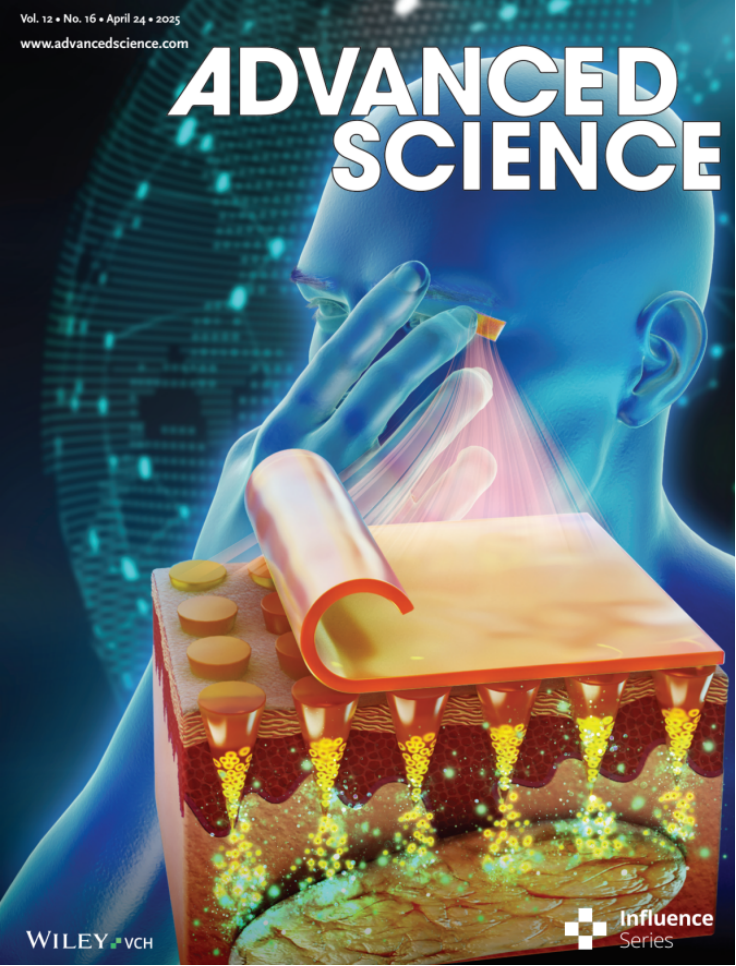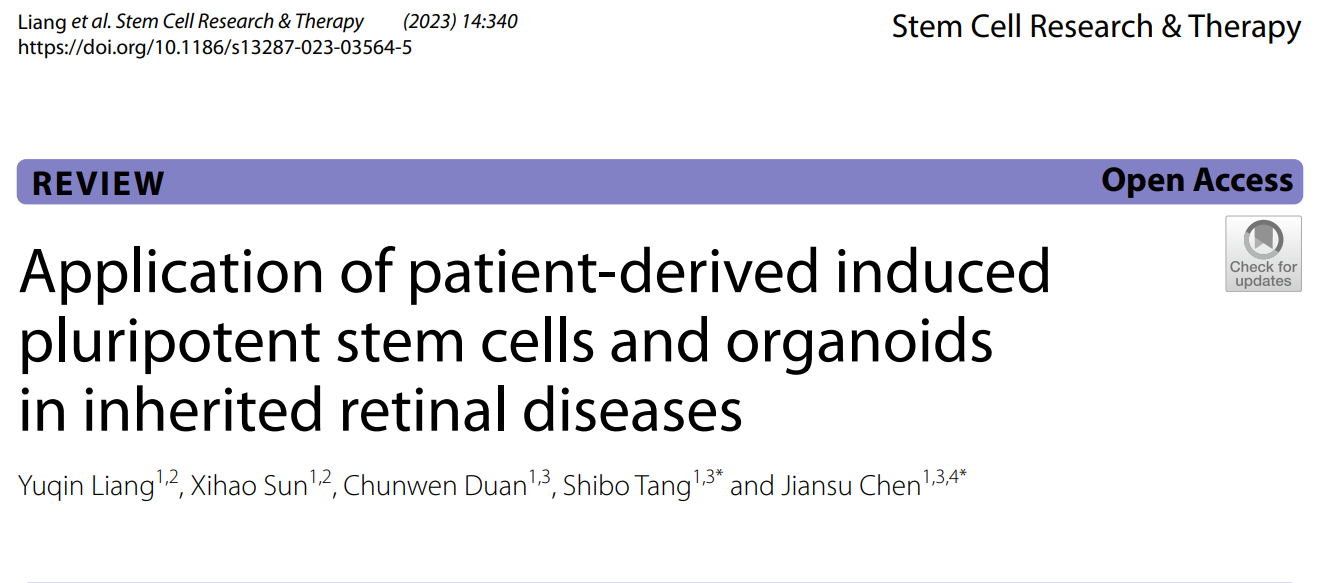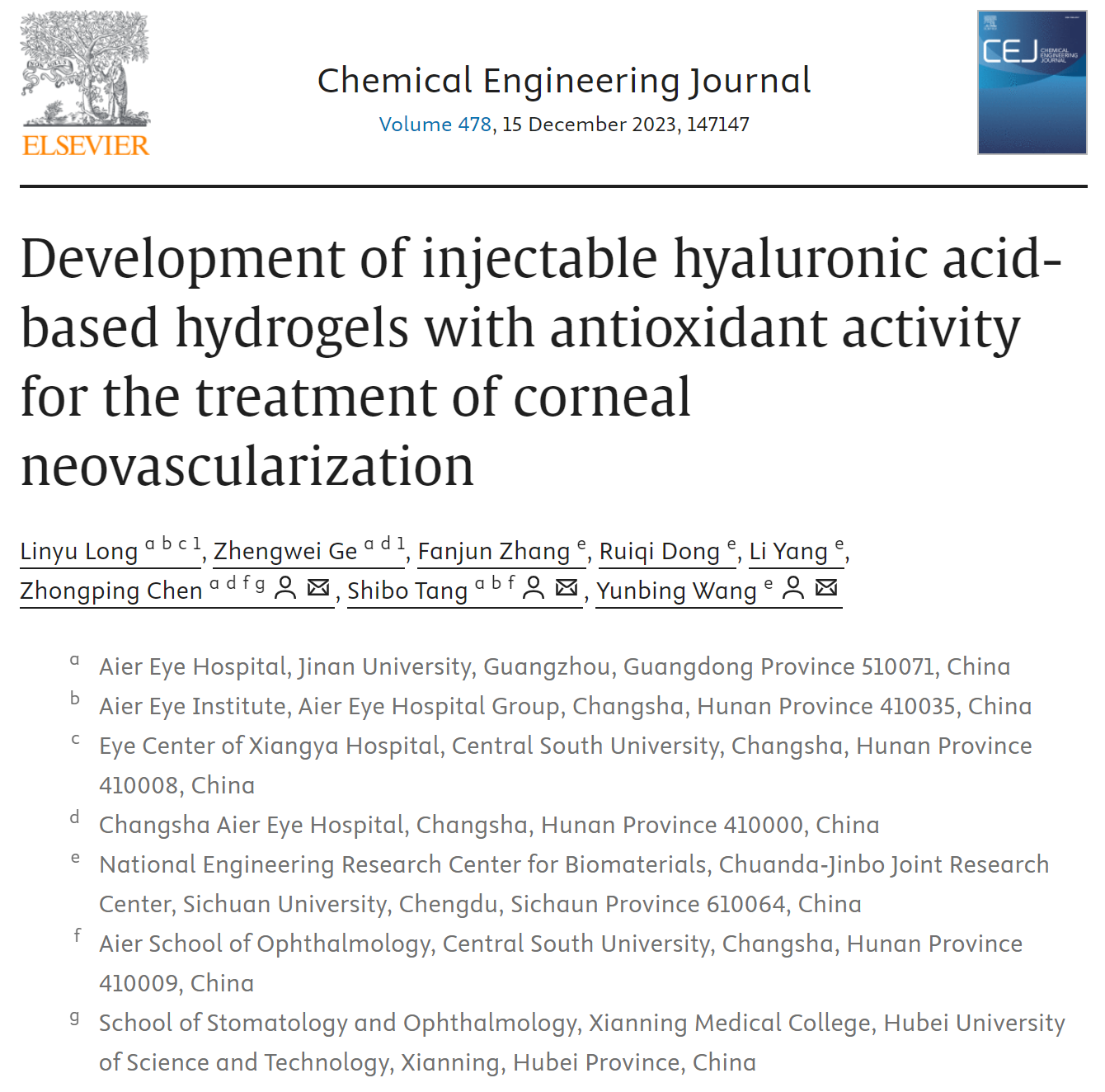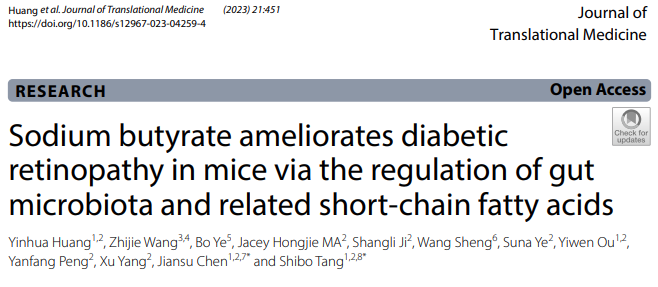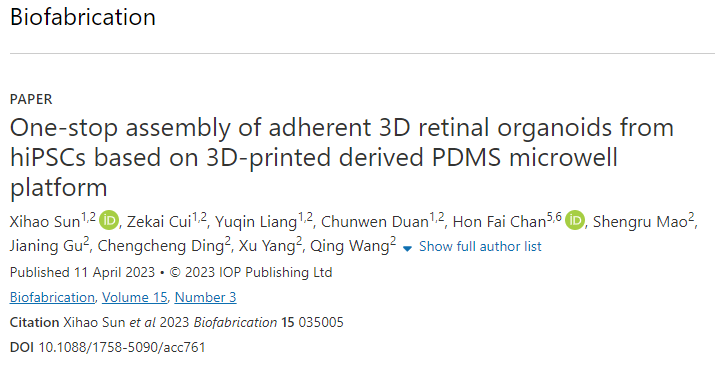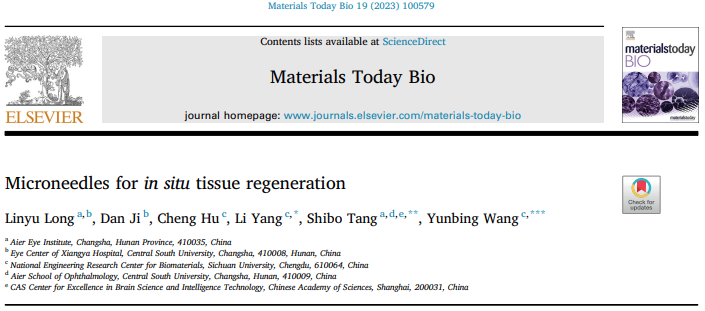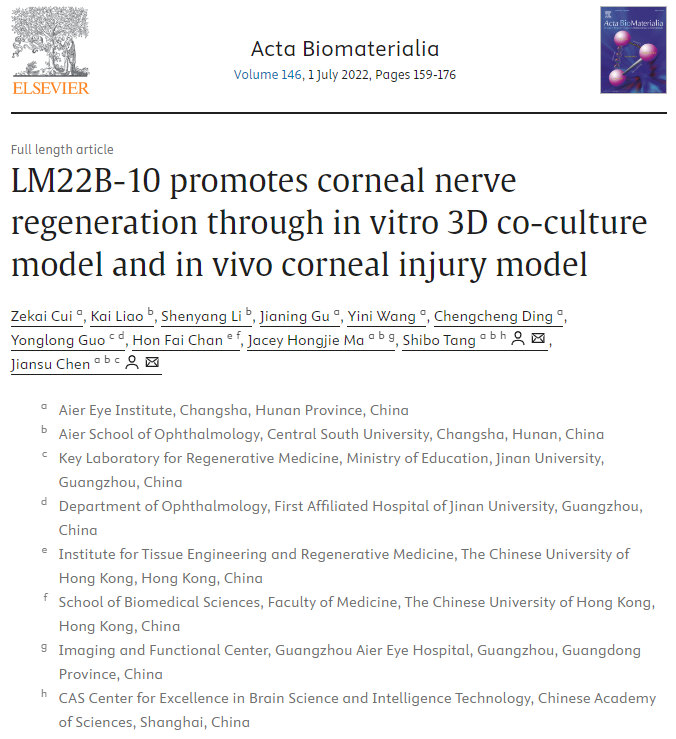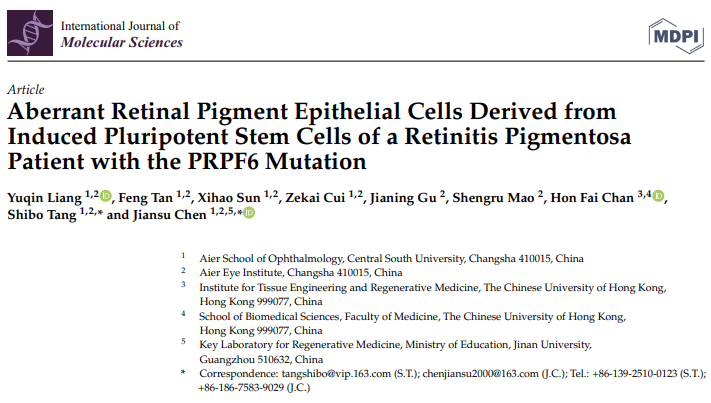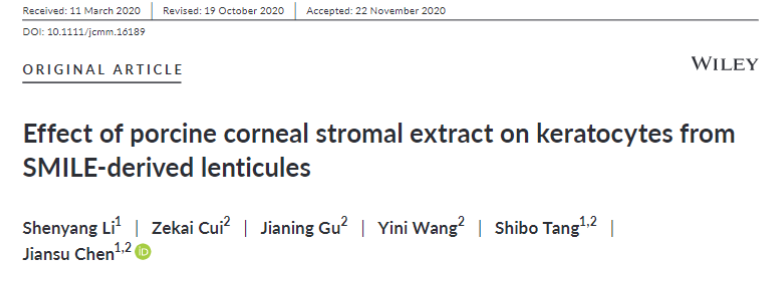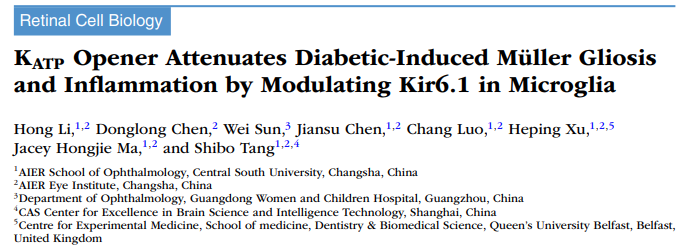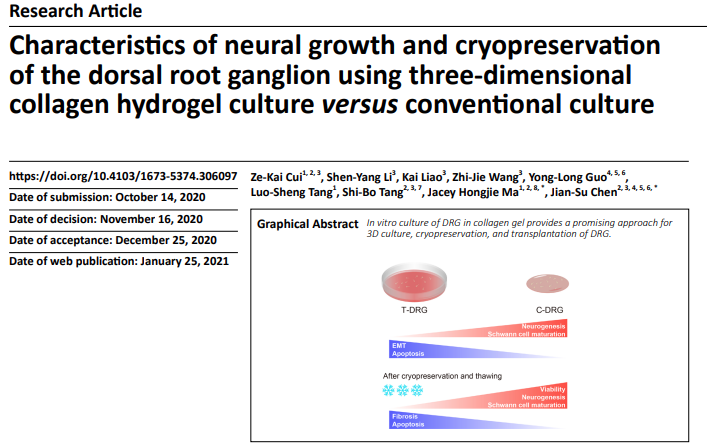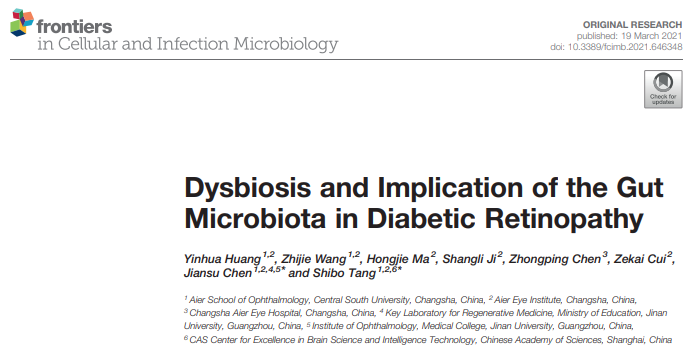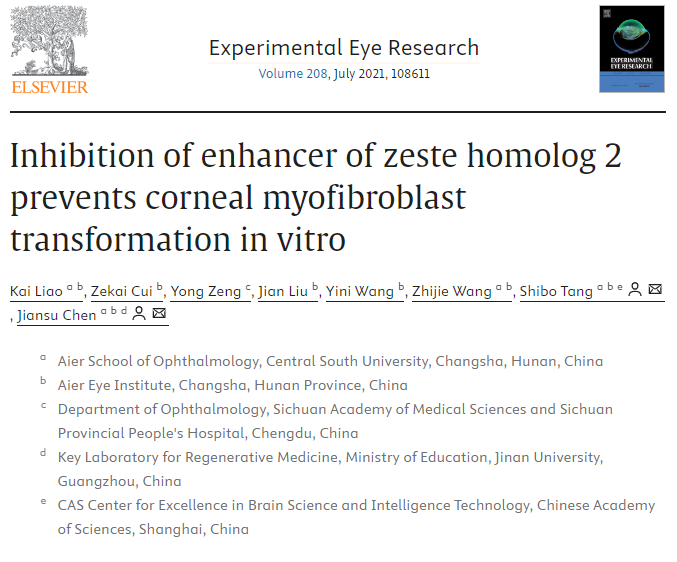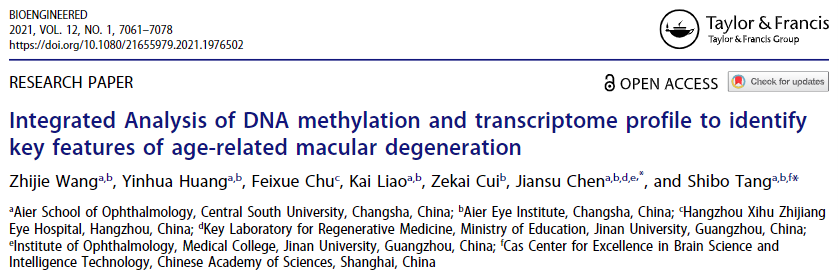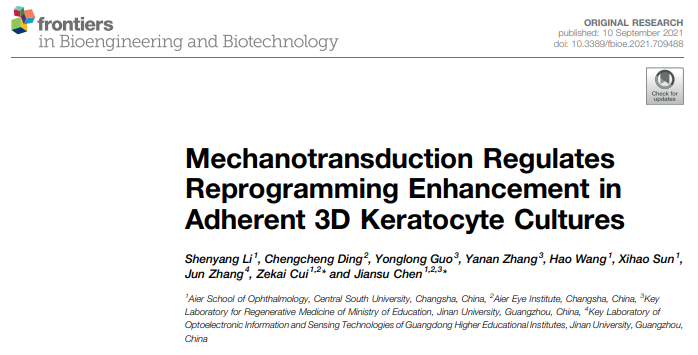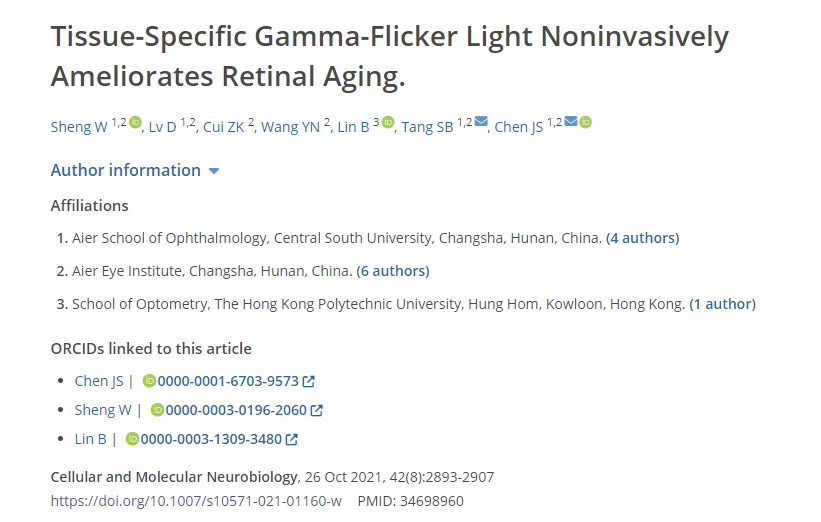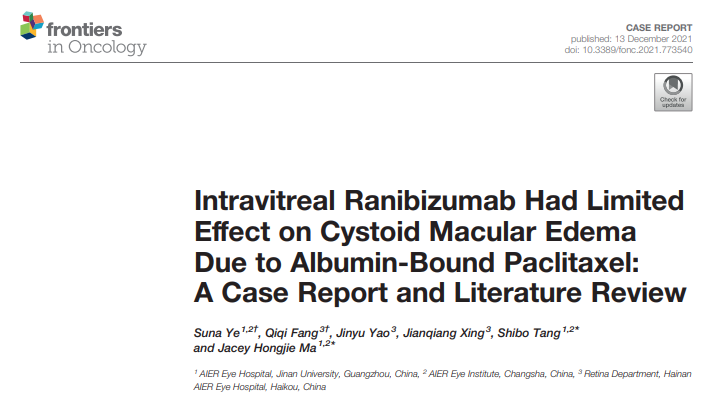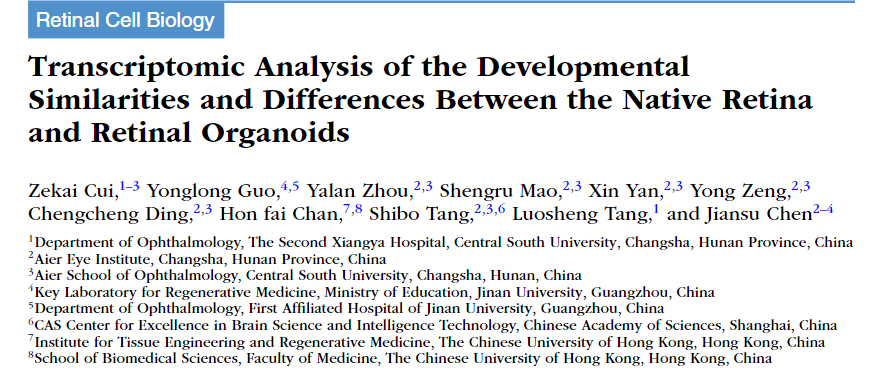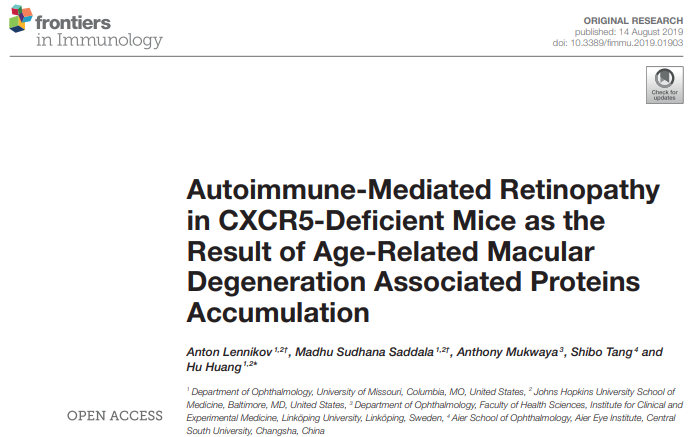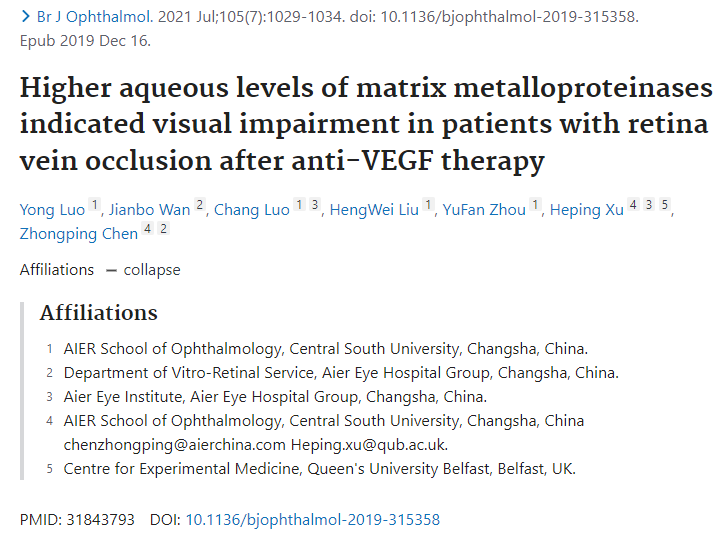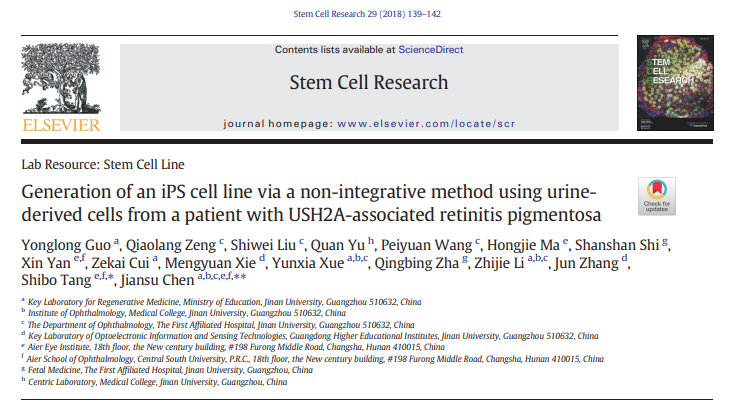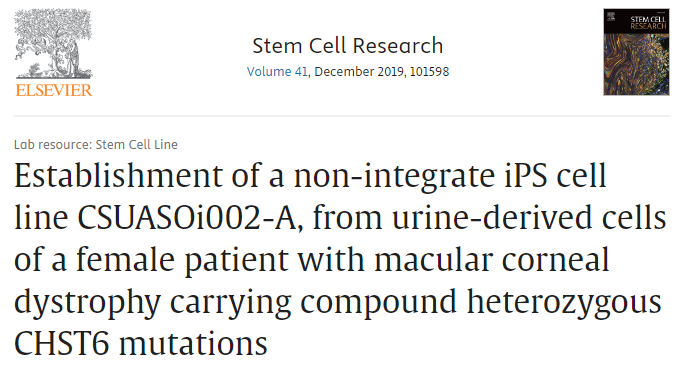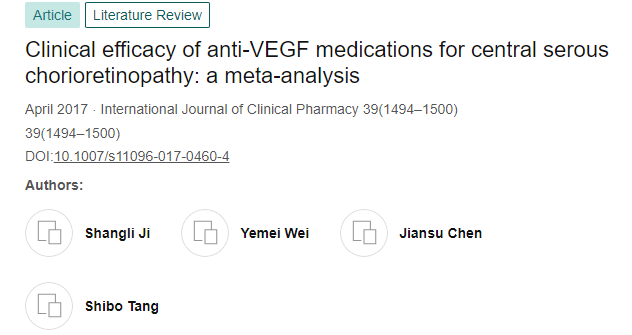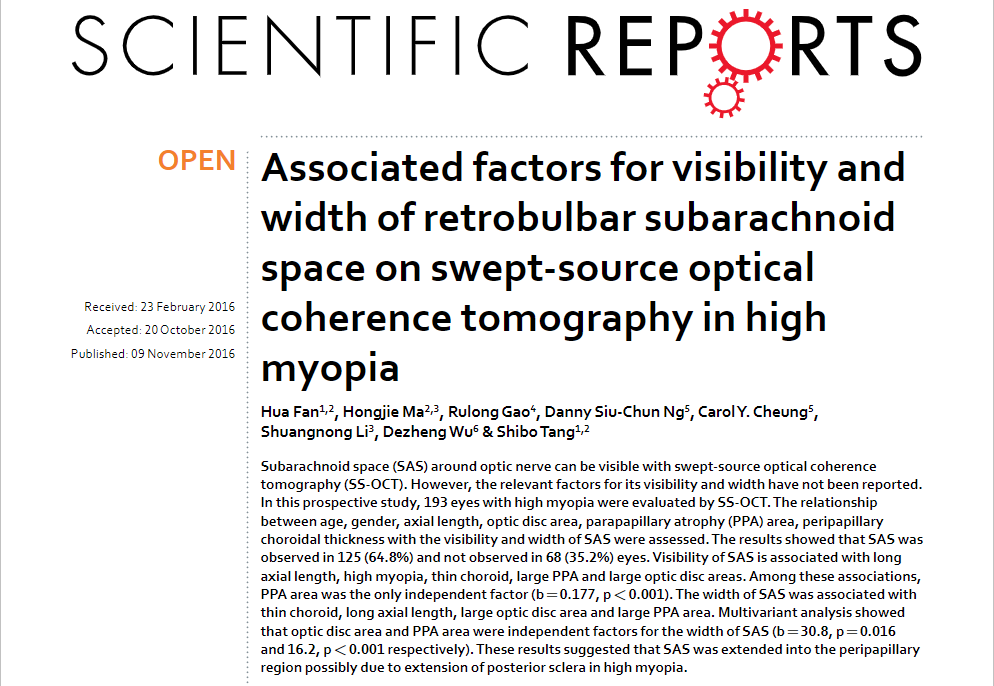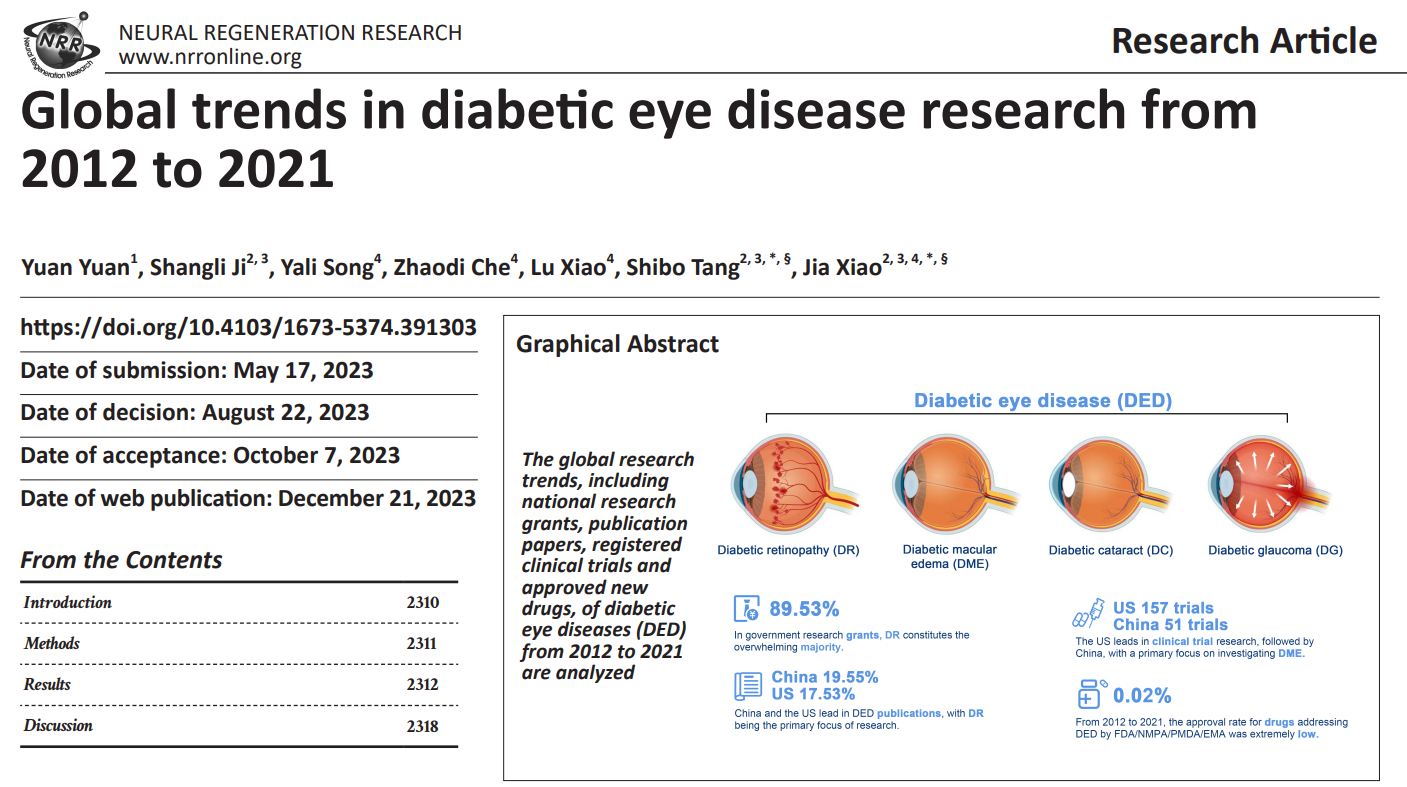- 首页
- 关于我们
概况介绍 研究方向 人才培养 委员会/committee
- 员工团队
特聘专家 主要领导 行政团队 技术团队 PI团队- 科研平台
中心实验室 实验动物中心 生物样本库- 最新资讯
- 首页
- 关于我们
概况介绍 研究方向 人才培养 委员会/committee
- 员工团队
特聘专家 主要领导 行政团队 技术团队 PI团队- 科研平台
中心实验室 实验动物中心 生物样本库- 最新资讯
Human Umbilical Cord Mesenchymal Stem Cells Attenuate Ocular Hypertension-Induced Retinal Neuroinflammation via Toll-Like Receptor 4 Pathway发布日期: 2024-09-03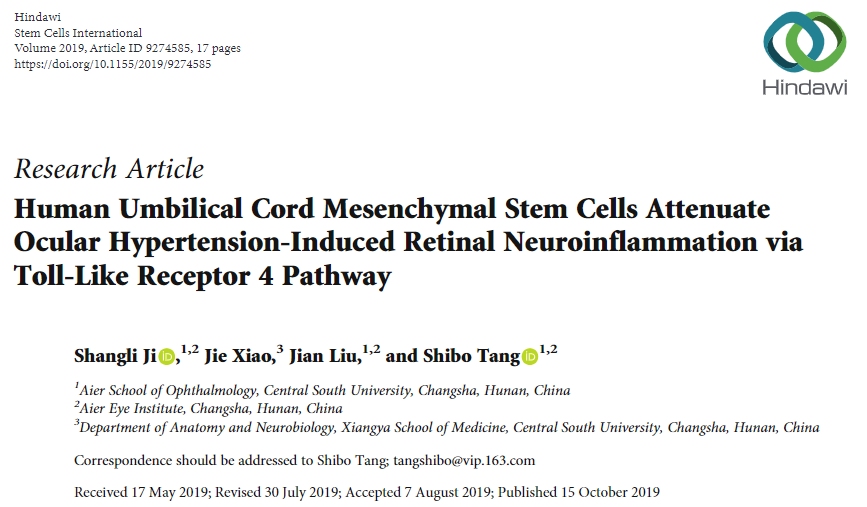
Abstract
Glaucoma is characterized by progressive, irreversible damage to the retinal ganglion cells (RGCs) and their axons. Our previous study has shown that the intravitreal transplantation of human umbilical cord mesenchymal stem cells (hUC-MSCs) reveals a neuroprotective role in microsphere injection-induced ocular hypertension (OHT) rat models. The protection is related to the modulation of glial cells, but the mechanisms are still unknown. The purpose of the present study is to clarify the potential neuroinflammatory mechanisms involved in the neuroprotective role of hUC-MSCs. OHT models were established with SD ratsthrough intracameral injection of polystyrene microbeads. The animals were randomly divided into three groups: the normal group, the OHT+phosphate-buffered saline (PBS) group, and the OHT+hUC-MSC group. Retinal morphology was evaluated by measuring the inner retinal thickness via optical coherence tomography (OCT). Retinal cell apoptosis was examined by TUNEL staining and Bax expression 14 days following hUC-MSC transplantation. The expression levels of glial fibrillary acidic protein(GFAP), ionized calcium binding adapter molecule 1 (iba-1), and toll-like receptor 4 (TLR4) were assessed via immunohistochemistry, real-time quantitative PCR, and Western blot. RNA and proteins were extracted 14 days following transplantation, and the expression levels of the TLR4 signaling pathways and proinflammatory cytokines—myeloid differentiation factor 88 (MyD88), IL-1β, IL-6, and TNF-α—were determined. OCT showed that the intravitreal transplantation of hUC-MSCs significantly increased the inner thickness of the retina. A TUNEL assay and the expression of Bax suggested that the apoptosis of retinal cells was decreased by hUC-MSCs 14 days following transplantation. Intravitreal hUC-MSC transplantation resulted in a decreased expression of GFAP, iba-1, TLR4, MyD88, IL-1β, IL-6, and TNF-α 14 days following transplantation. In addition, via in vitro experiments, we found that the increased expression of the TLR4 signaling pathway induced by lipopolysaccharide (LPS) was markedly decreased after hUC-MSCs were cocultured with rMC-1 and BV2 cells. These findings indicate that hUC-MSC transplantation attenuates OHT-induced retinal neuroinflammation via the TLR4 pathway.
上一篇Generation of an iPS cell line via a non-integrative method using urine-derived cells from a patient with USH2A-associated retinitis pigmentosa下一篇Establishment of a non-integrate iPS cell line CSUASOi002-A, from urine-derived cells of a female patient with macular corneal dystrophy carrying compound heterozygous CHST6 mutations相关文章-
近日,爱尔眼科与南开大学联合科研团队取得重大突破,其研究成果在国际学术期刊《Advanced Science》(中科院 1区 TOP,影响因子14.3)上重磅发...2025-05-19
-
Inherited retinal diseases (IRDs) can induce severe sight-threatening retinal de...2024-09-11
-
Corneal neovascularization (CNV) is a condition that can severely adversely affe...2024-09-05
-
Diabetic retinopathy (DR) is a common complication of diabetes and has a high pr...2024-09-04
-
Diabetic retinopathy (DR) development is associated with disturbances in the gut...2024-09-04
-
The three-dimensional (3D) retinal organoids (ROs) derived from human induced pl...2024-09-04
-
Tissue injury is a common clinical problem, which may cause great burden on pati...2024-09-04
-
Corneal nerve wounding often causes abnormalities in the cornea and even blindne...2024-09-04
-
Pre-mRNA processing factors (PRPFs) are vital components of the spliceosome and ...2024-09-04
-
Propagating large amounts of human corneal stromal cells (hCSCs) in vitro while ...2024-09-04
-
This study aimed to determine the effect of pinacidil, a nonselective KATP chann...2024-09-04
-
In vertebrates, most somatosensory pathways begin with the activation of dorsal ...2024-09-04
-
The pathogenesis of type 2 diabetes mellitus (T2DM) is commonly associated with ...2024-09-04
-
Corneal fibroblast can be transformed into corneal myofibroblasts by TGF-β1.2024-09-04
-
Age-related macular degeneration (AMD) is a common vision-threatening disease. T...2024-09-04
-
Suspended spheroid culture using ultralow attachment plates (ULAPs) is reported ...2024-09-04
-
Purpose: Retinal inflammation is involved in the pathogenesis of several retinal...2024-09-03
-
Aging is a risk factor for multiple retinal degeneration diseases. Entraining br...2024-09-03
-
Angiographically silent cystoid macular edema (CME) is a rare complication from ...2024-09-03
-
The neuroretina is protected by its own defense system, that is microglia and th...2024-09-03
-
Purpose: We performed a bioinformatic transcriptome analysis to determine the al...2024-09-03
-
Previous research has shown that CXCR5−/− mice develop retinal degeneration (RD)...2024-09-03
-
Purpose: To investigate the levels of matrix metalloproteinases (MMPs) in aqueou...2024-09-03
-
In vitro generation of a functional retinal pigment epithelium (RPE) monolayer s...2024-09-03
-
We have established an induced pluripotent stem (iPS) cell line using urine-deri...2024-09-03
-
Purpose: The purpose of this study is to investigate the potential therapeutic b...2024-09-03
-
We report the human induced pluripotent stem cell line (iPSC) CSUASOi002-A, gene...2024-09-03
-
Background Central serous chorioretinopathy (CSC) is a widespread retinal disord...2024-09-03
-
Glaucoma is characterized by progressive, irreversible damage to the retinal gan...2024-09-03
-
Subarachnoid space (SAS) around optic nerve can be visible with swept-source opt...2024-09-03
-
Diabetic eye disease refers to a group of eye complications that occur in diabet...2023-05-01
- 员工团队
- 员工团队


